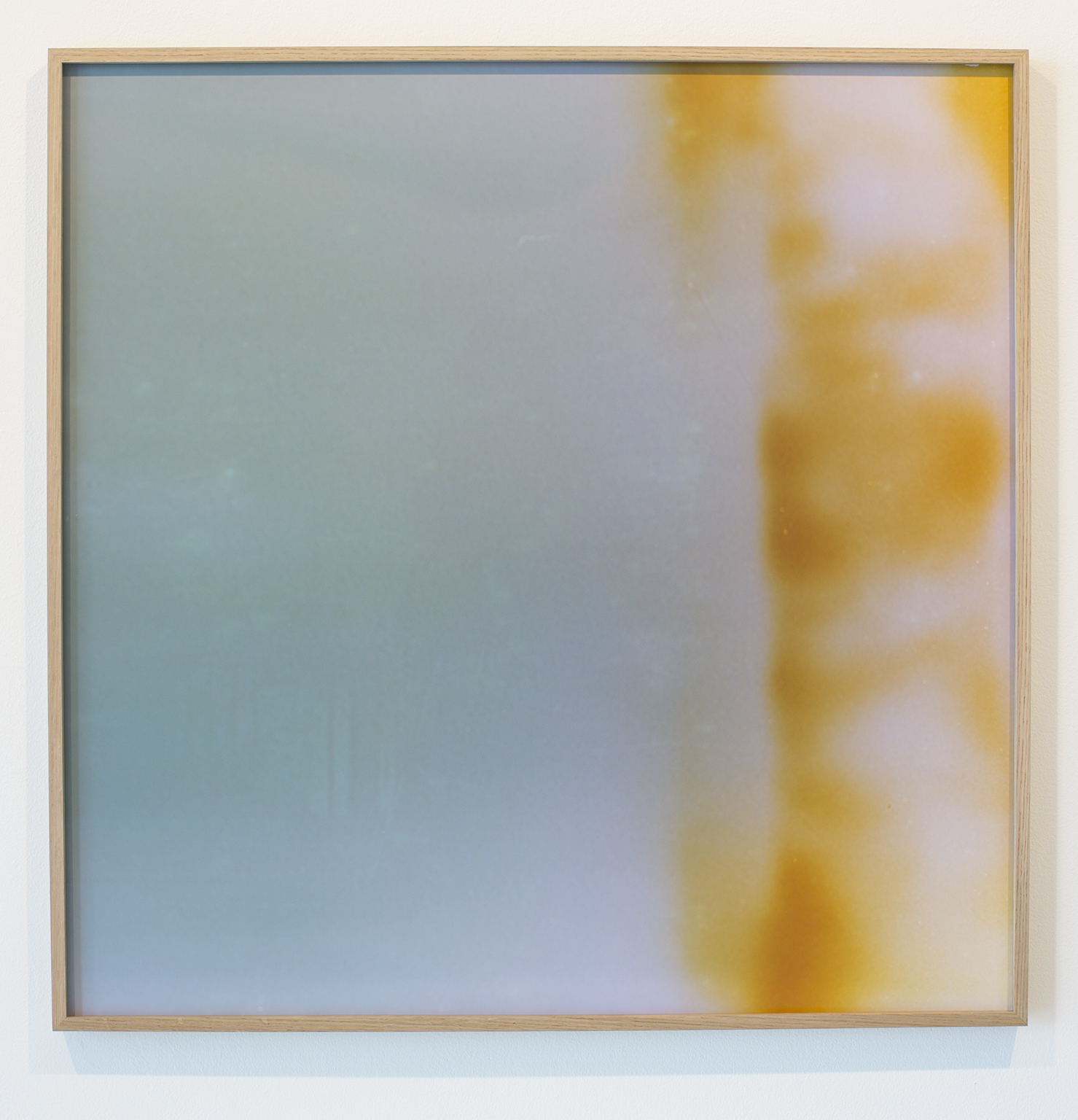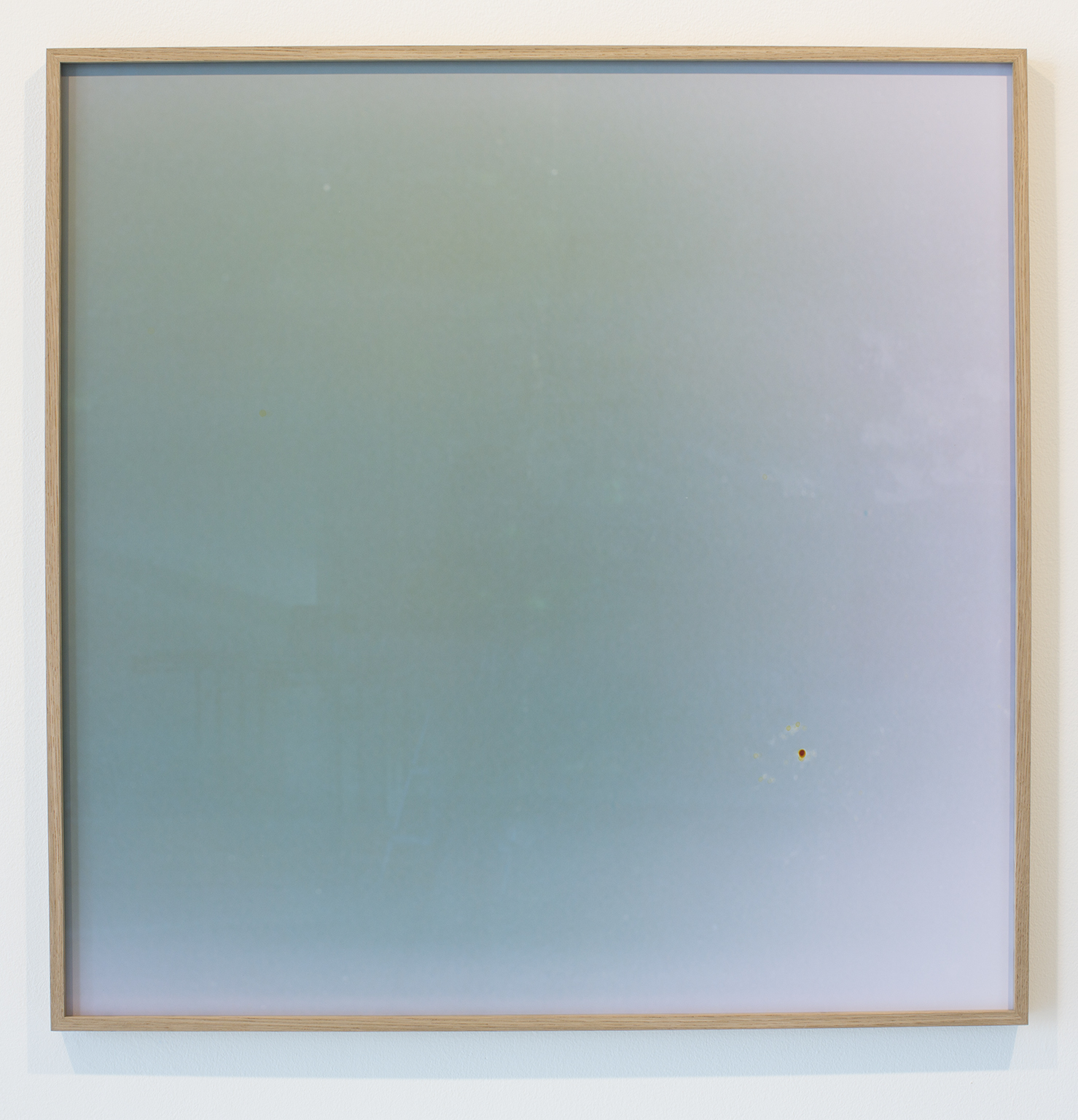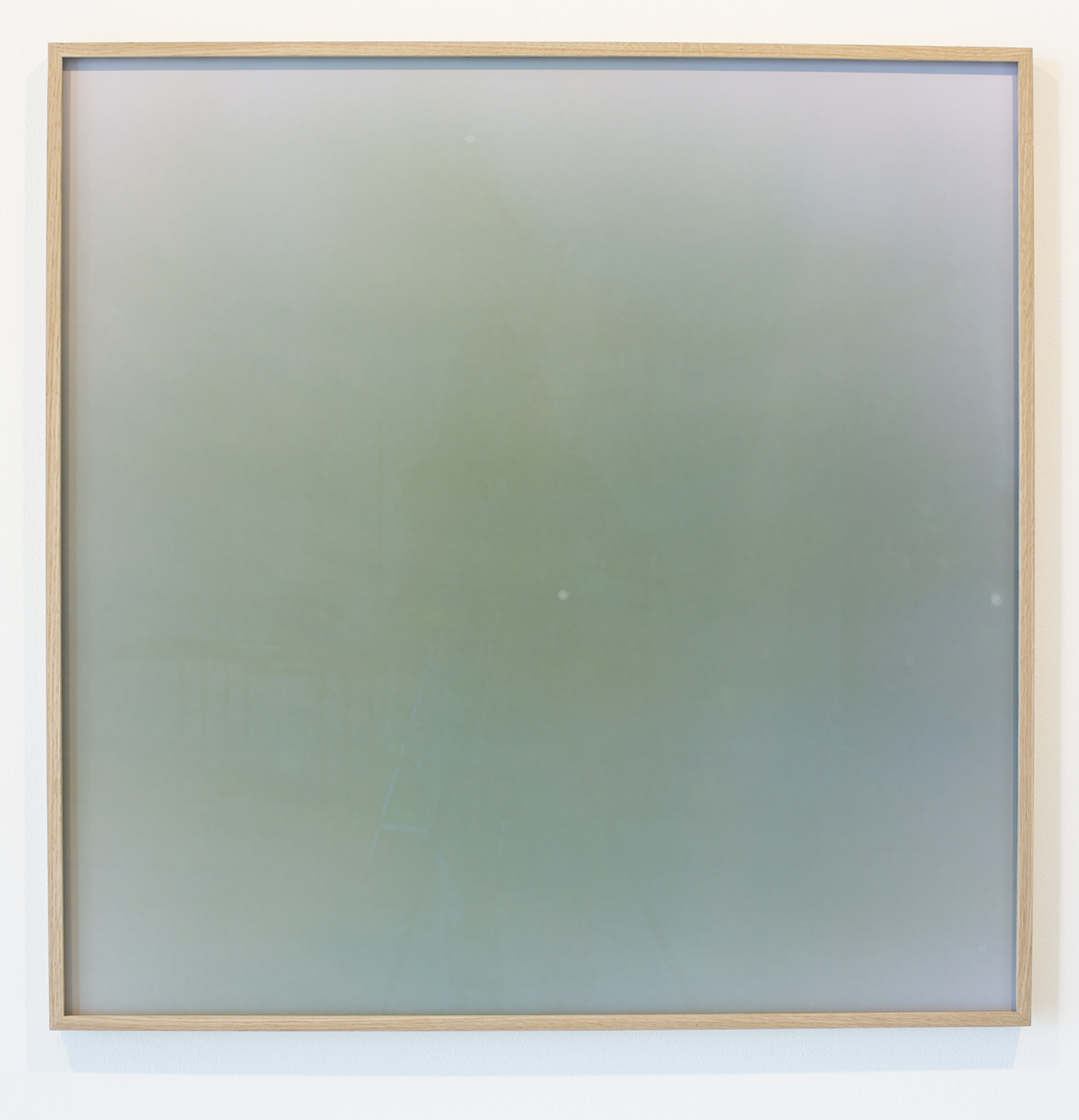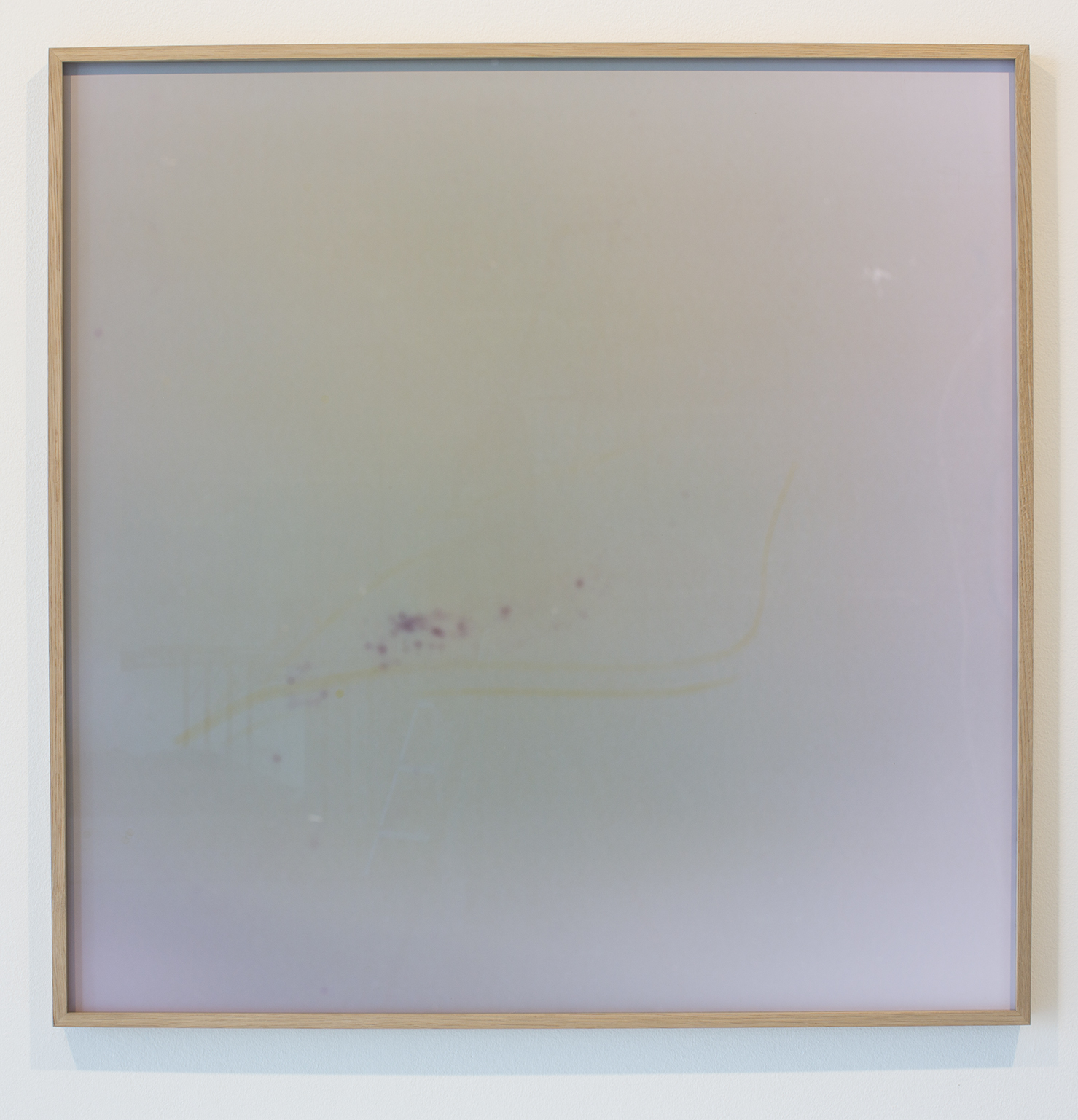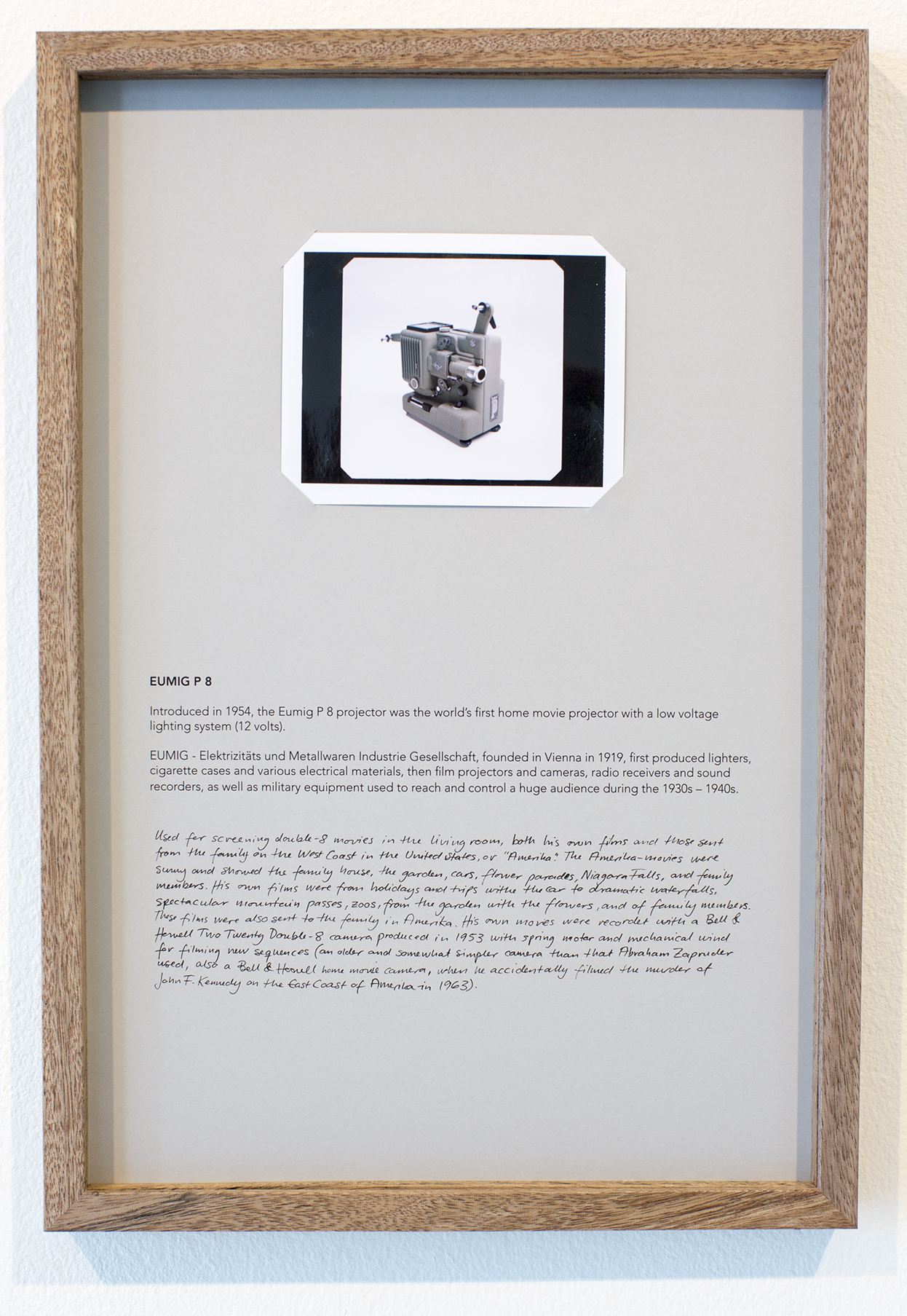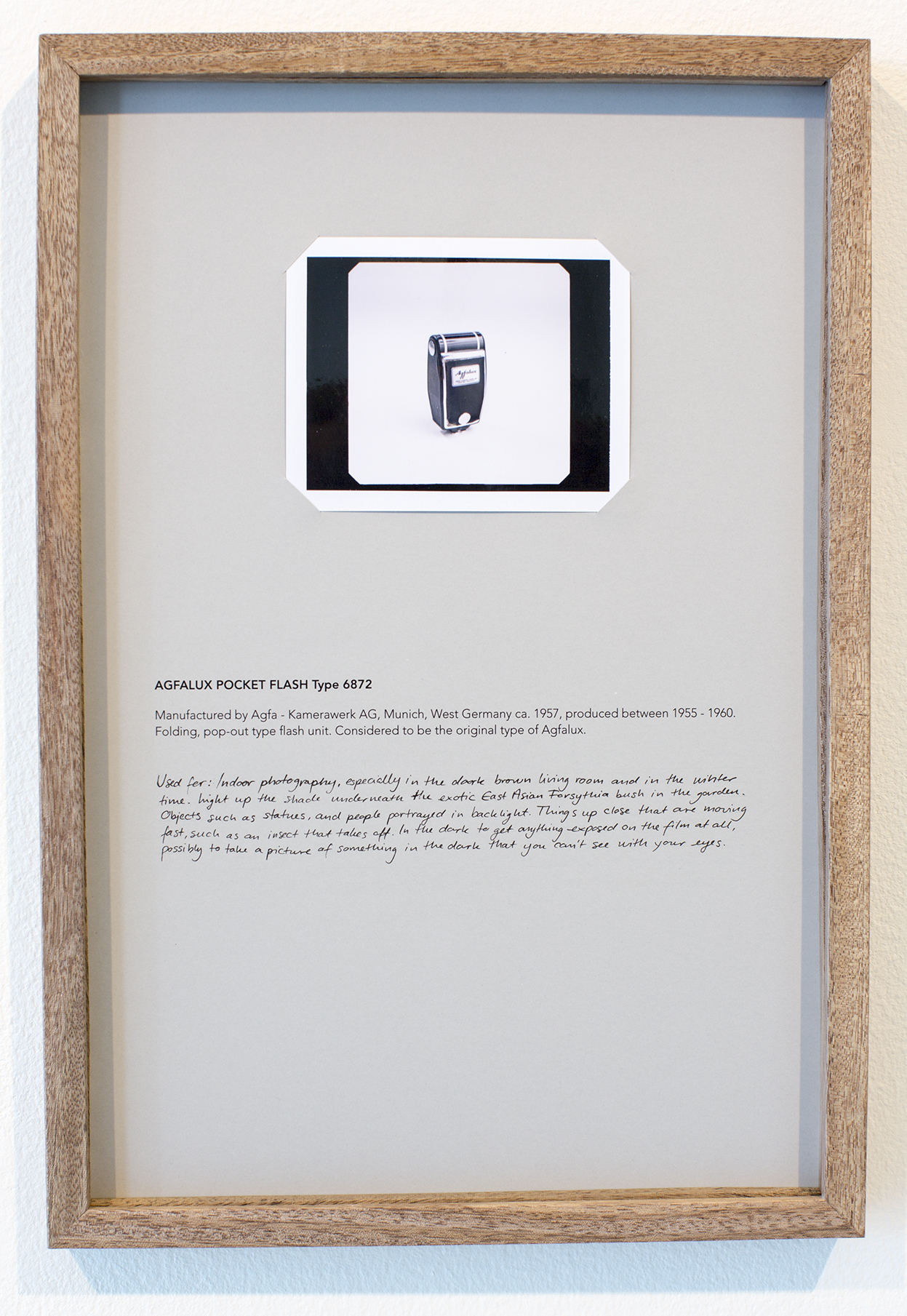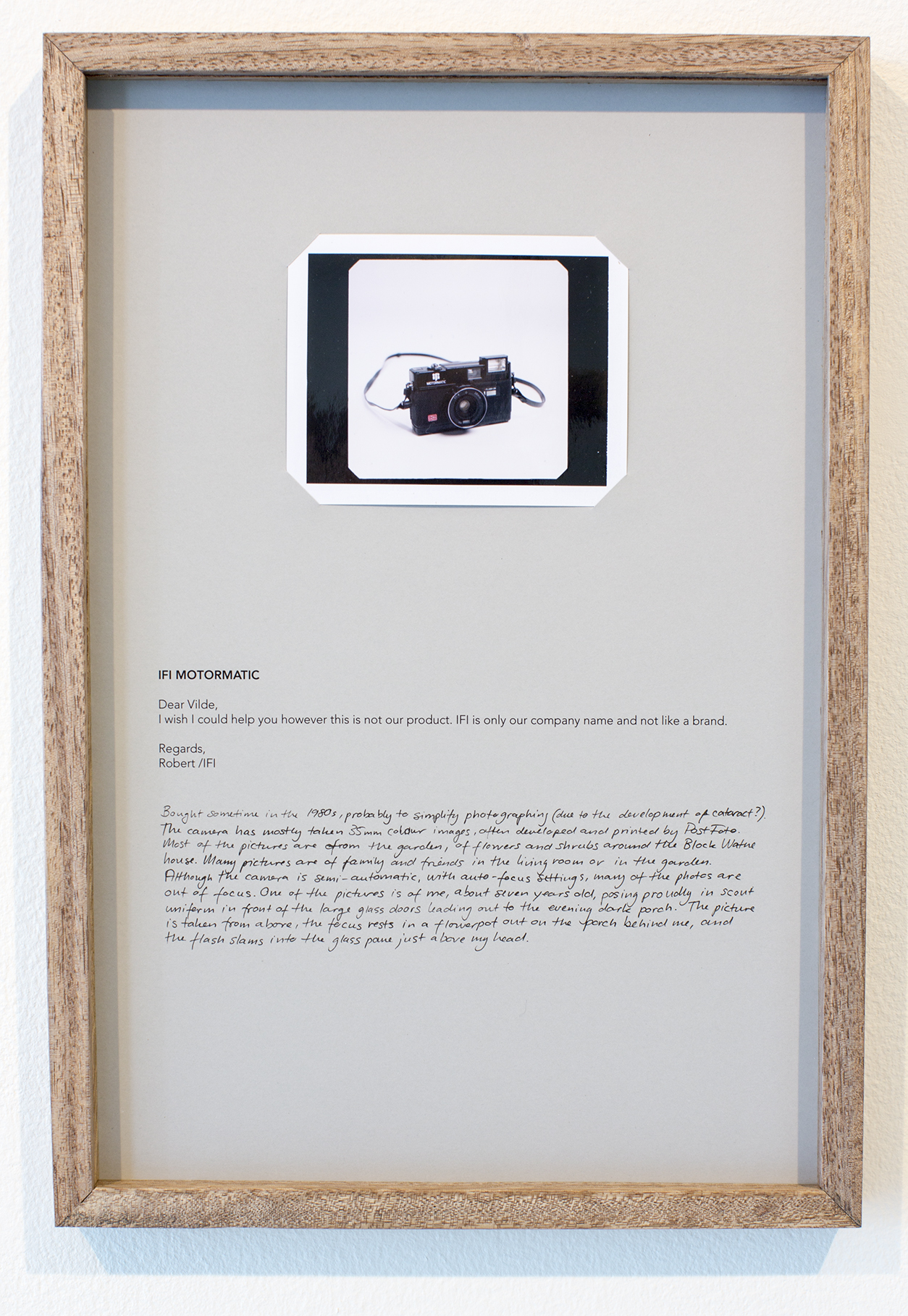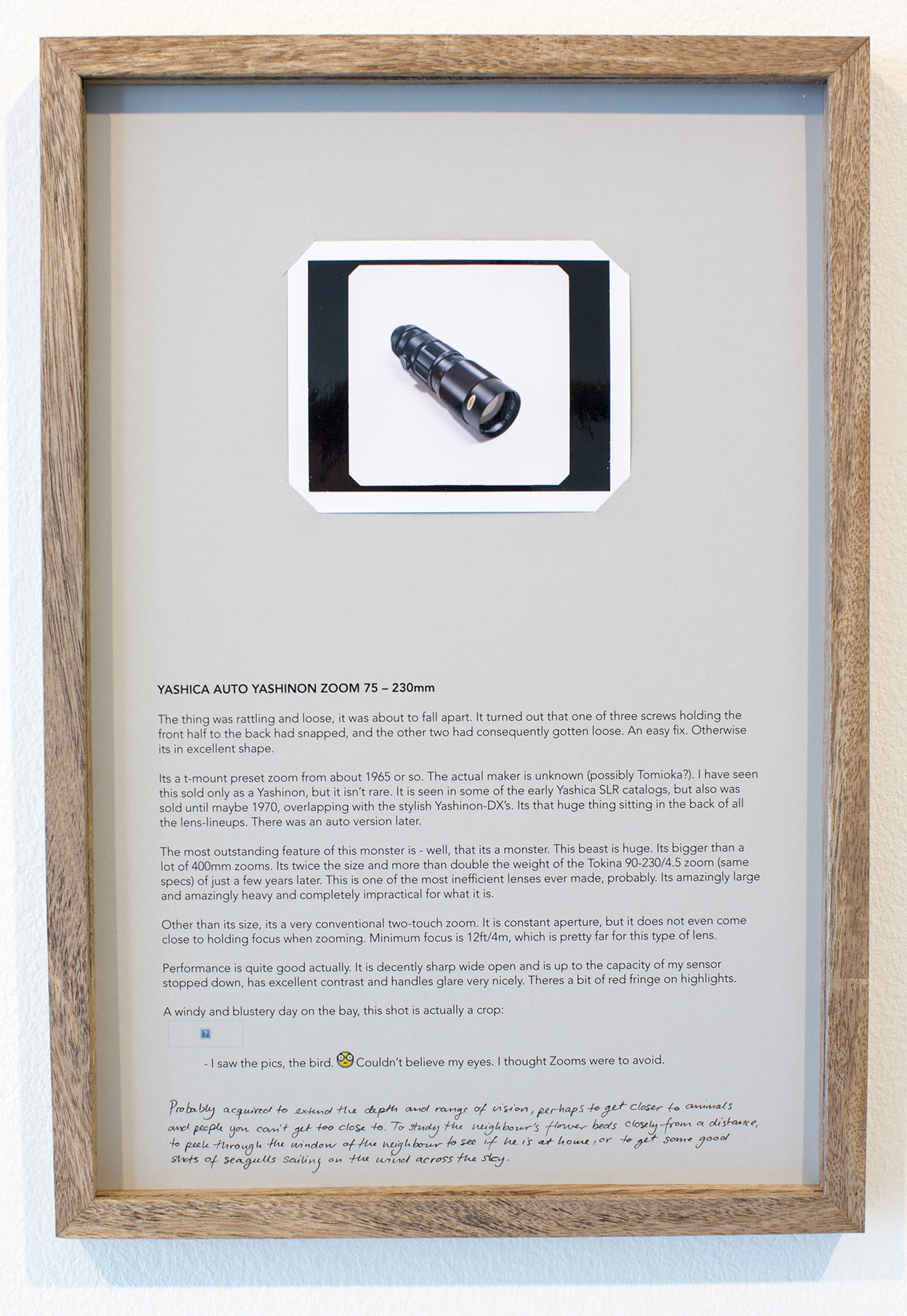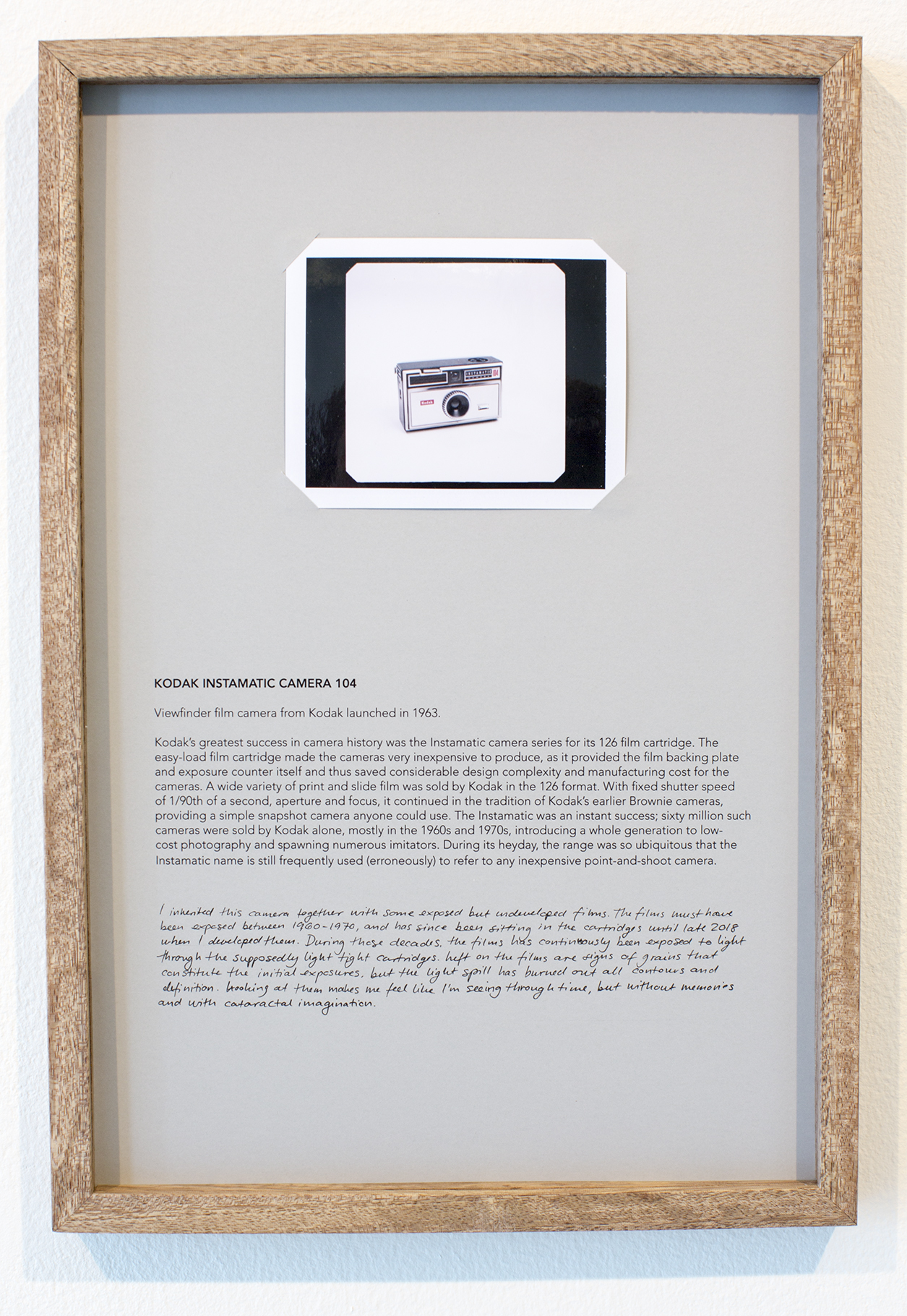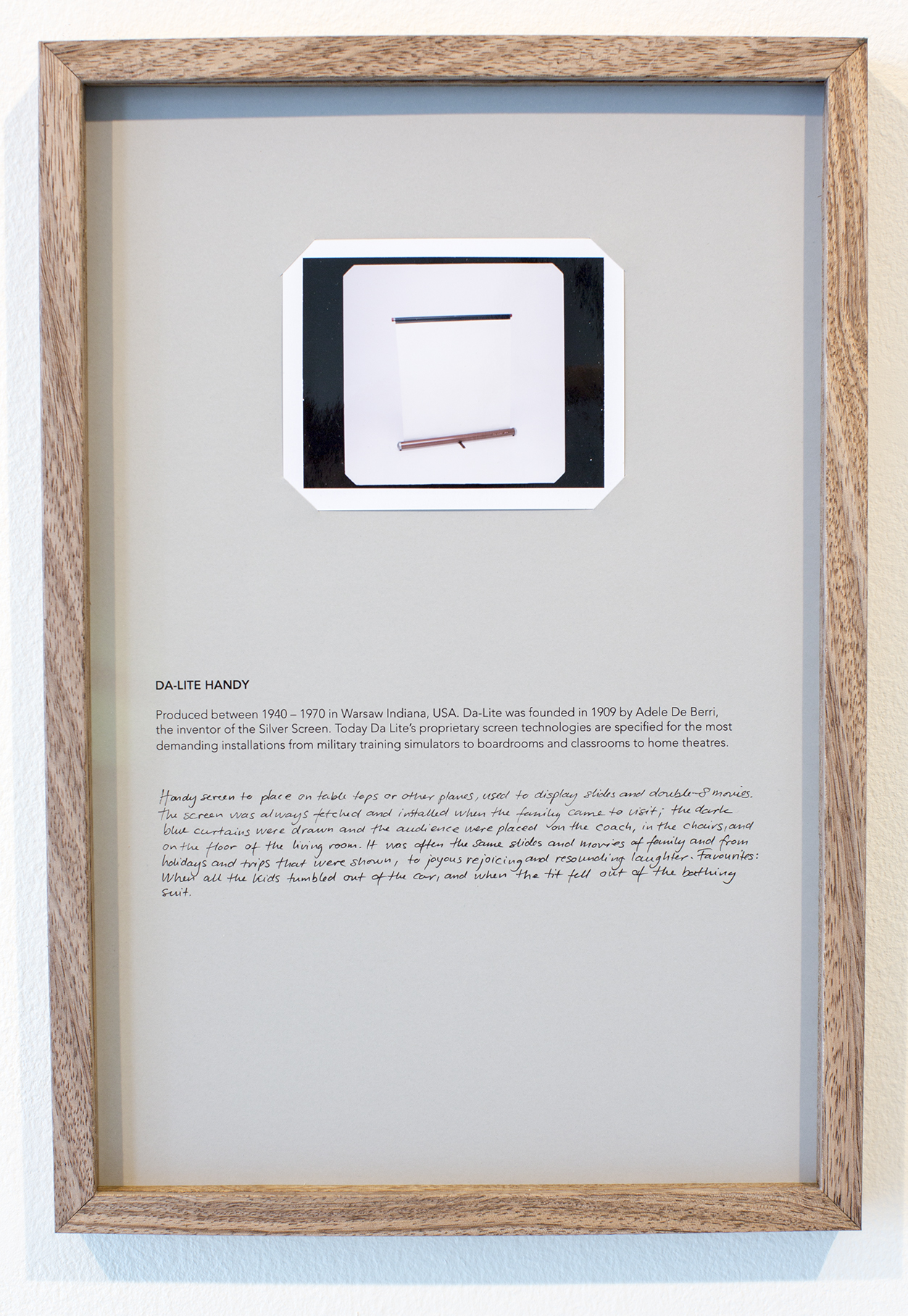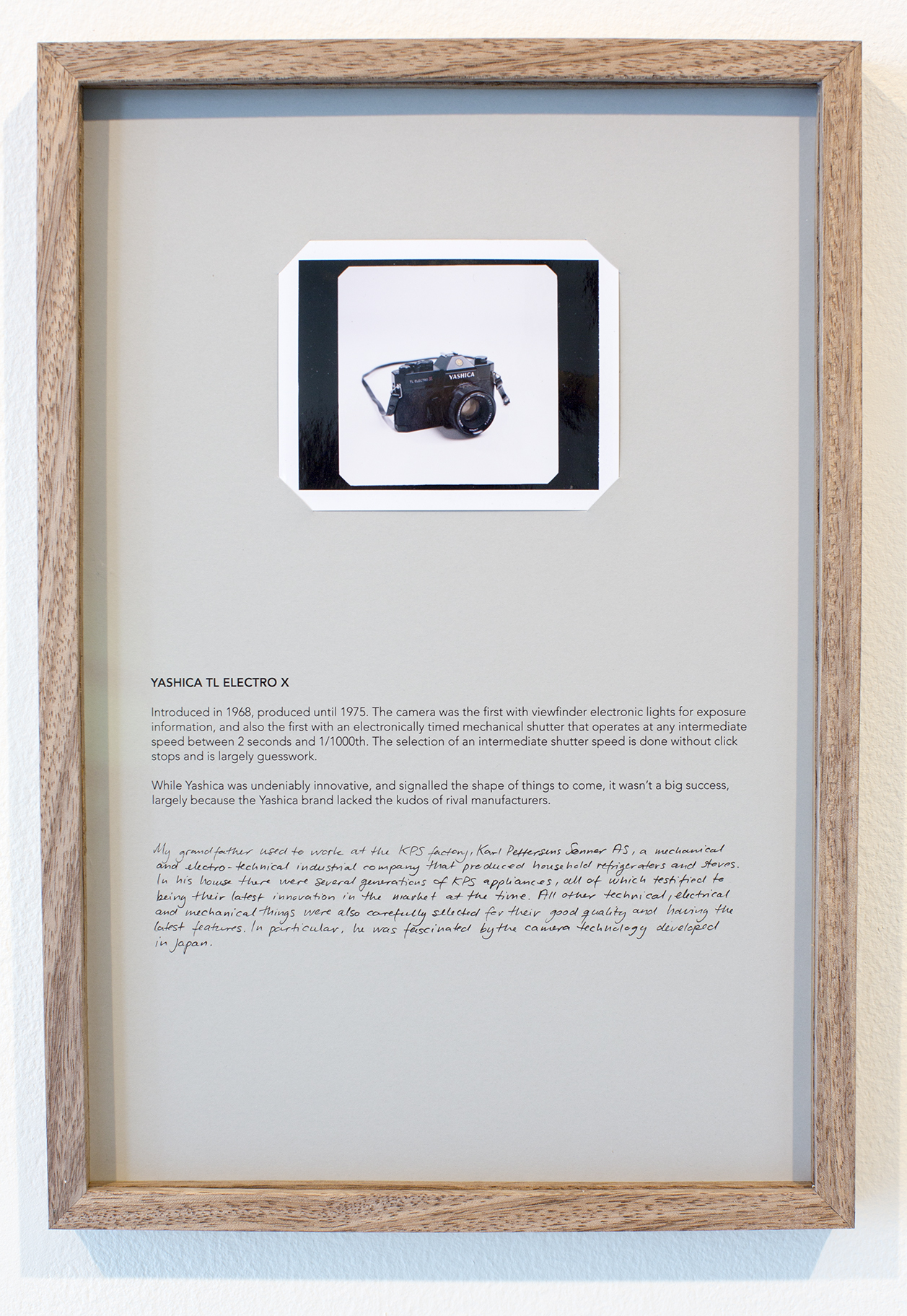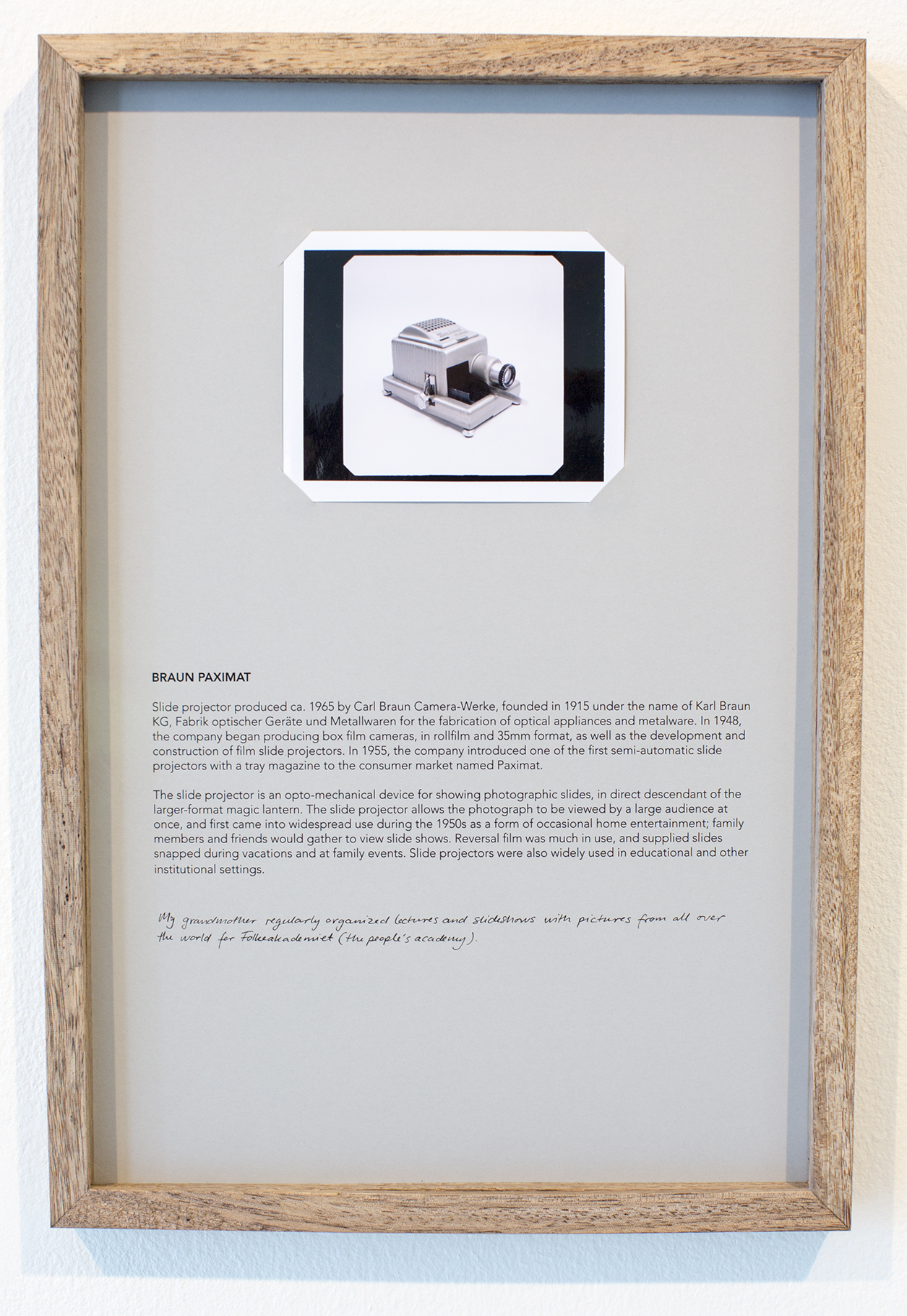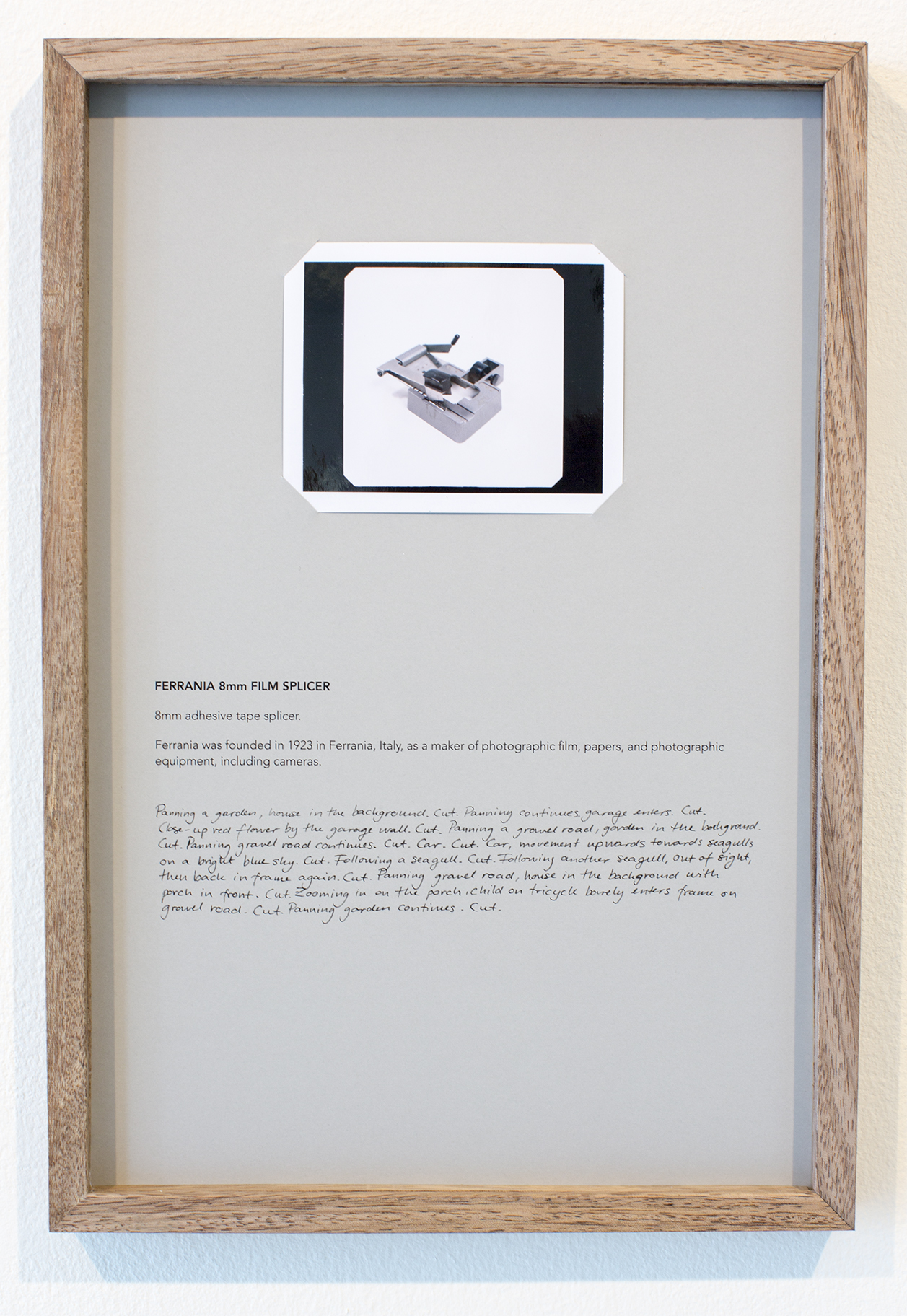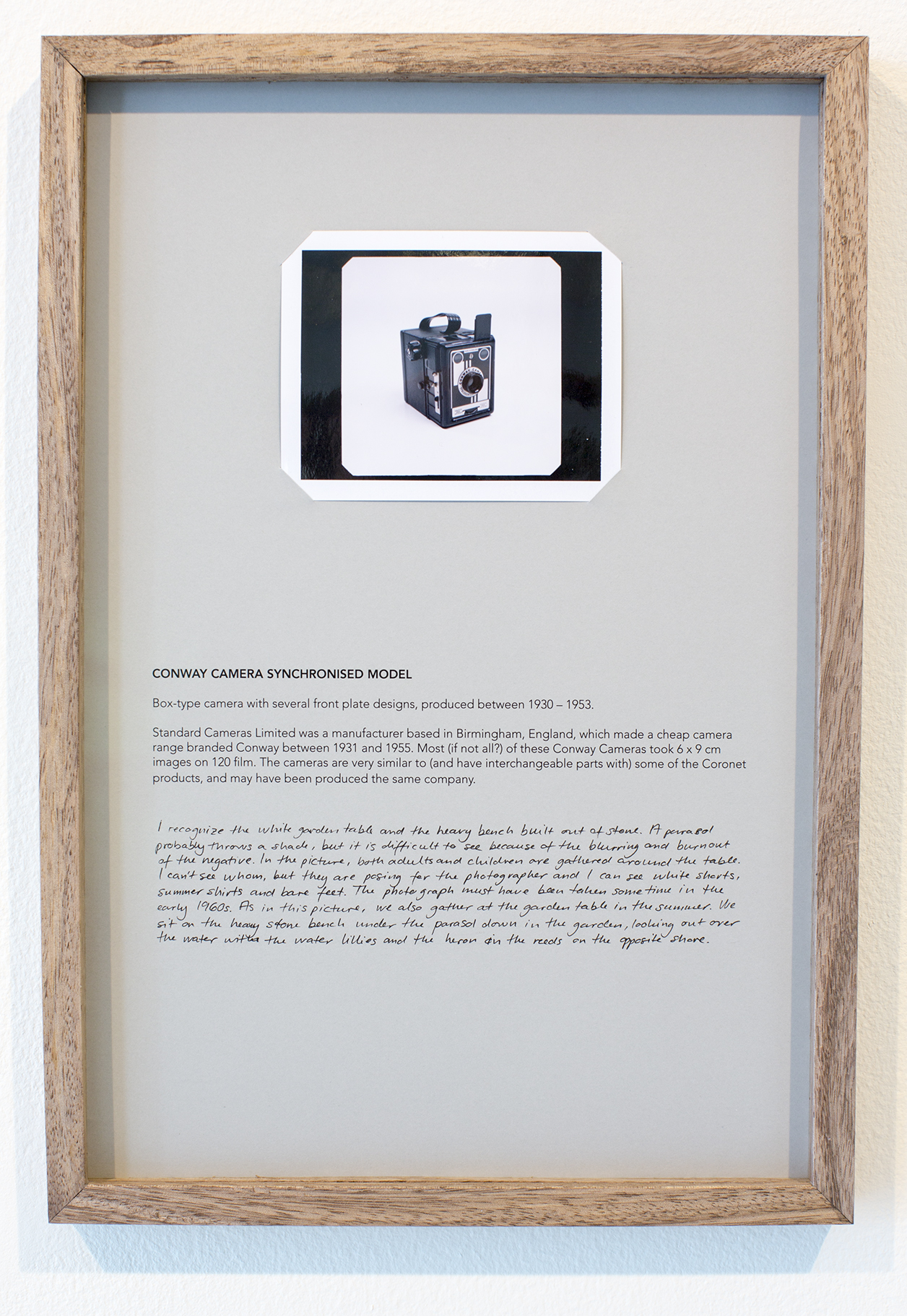CATARACT
Visningsrommet USF in Bergen March 30 – April 7 2019
Cataract revolves around some inherited negative roll films that once were exposed, but have been sitting undeveloped in the cartridges for decades. The concealed photographs testify to something that took place and was worth taking pictures of, something that begins to exist again only when the photographs are developed and the stories are told.
One often takes pictures to remember. But how unreliable is not both the photograph and the memory? Where digital image archives can appear impenetrable in their all-encompassing volume, a small selection of exposures can open up to a myriad of possible stories. The memory and the imagination are closely linked in the brain. Is it really possible to imagine something one doesn't already have experience with? And how can one evoke invisible photographs?
The exhibition at Visningsrommet USF showed three new works where memories, the written story and imaginations are linked together through the negative roll films and inherited camera equipment. In Technical Department, the camera equipment is documented as polaroid photographs, and its technical specifications are tied to the actual use history of the equipment. The photographs in the series Exposure are copies made from the negative roll films, and show how light and chemical processes over time have erased the pictures into something unrecognizable. The title work Cataract is based on the sound images the artist heard when she visited the negative roll films using the technique Remote Listening, an adapted version of Remote Viewing that amongst other has been used in intelligence by the CIA to get impressions and information from distant and unseen places and/or goals using "extrasensory" perception or to "sense" with the mind. Cataract are sonic descriptions of situations, where photographic properties, techniques and processes affect the way in which the sound is built up.
The exhibition was kindly supported by BEK - Bergen Centre for Electronic Arts, Norwegian Arts Council, Regional Project Funds and the Municipality of Bergen.
Exposure (2019)
5 analogue photographical prints from an inherited 126mm film, exposed but undeveloped until late 2018
Each 90 x 90 cm
Ed. 5 + 2 AP
Cataract (2019)
Sound images from exposed but undeveloped films, recreated from sounds experienced during a visit in the films done with the Remote Listening-technique (an adapted version of the CIA intelligence technique Remote Viewing - the practice of seeking impressions about a distant or unseen target, purportedly using extrasensory perception or "sensing" with the mind)
6 channel surround sound work (5.1 output) for a room installation or cinema/theatre
9:55 min. to be looped
(File below in stereo mp3-format)
Sound design: Rikard Strømsodd
Technical Department (2019)
11 Polaroid-photographs of inherited photo equipment, technical specifications and hand written use history
36 x 24 cm each
Polaroid photo: Bjarte Bjørkum
Research sources February 2019:
http://www.ifisource.com/
http://www.camera.portraits.srv2.com/tlelectrox.htm
http://camera-wiki.org/wiki/Yashica_TL_Electro-X
https://www.legrandav.com/en/products/da-lite
http://camera-wiki.org/wiki/Standard_Cameras_Ltd
http://camerapedia.wikia.com/wiki/Paxette_electromatic
https://en.wikipedia.org/wiki/Ferrania
http://camerapedia.wikia.com/wiki/Kodak_Instamatic_104
https://en.wikipedia.org/wiki/Carl_Braun_Camera-Werk#Paximat
https://web.archive.org/web/20070503094440/http://www.copweb.be/Zapruder%20Camera.htm
https://en.wikipedia.org/wiki/Zapruder_film
https://en.wikipedia.org/wiki/Instamatic
http://forum.mflenses.com/yashinon-r-75-230-4-5-preset-t-mount-oversize-zoom-t11445,highlight,%2Byashinon.html
https://en.wikipedia.org/wiki/Eumig
http://www.rolandandcaroline.co.uk/agfaflash/agfaflash.html
CATARACT





